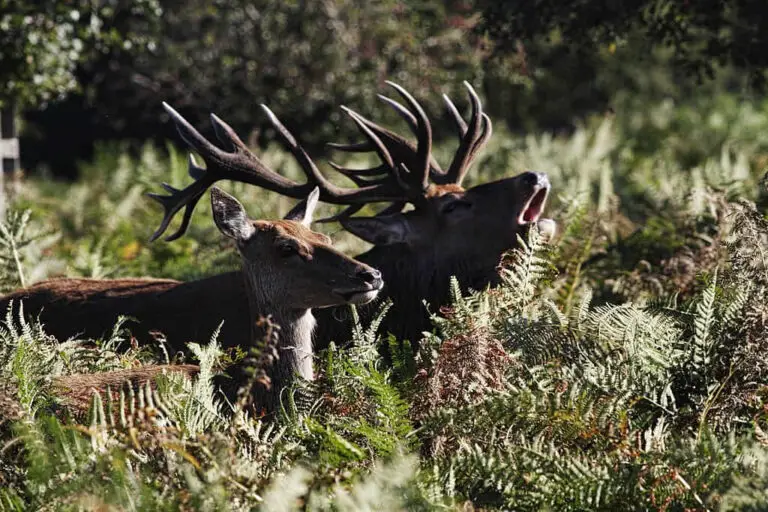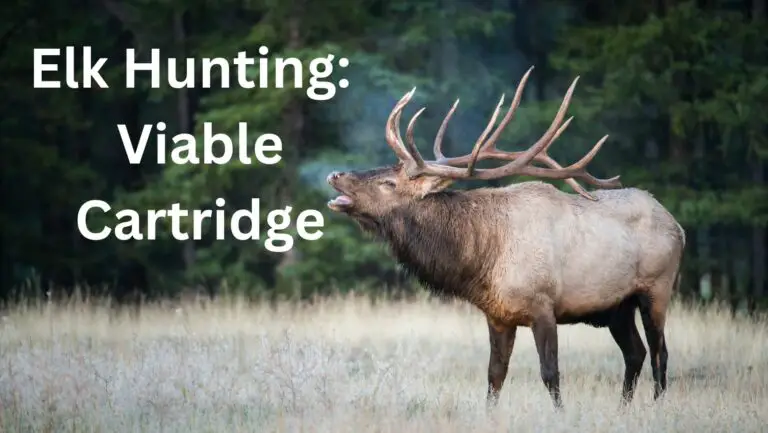
Decorating your space with a deer mount can be a captivating way to showcase your passion for hunting and nature. Whether you’ve recently harvested a deer or have a trophy mount you’d like to display, properly hanging it on drywall is essential to ensure its safety and longevity. While the process might seem daunting, with the right tools and techniques, you can easily achieve a secure and visually appealing display. In this article, we’ll guide you through the steps of hanging a deer mount on drywall.
Table of Contents
Materials You’ll Need:
Before you start, gather the following materials and tools:
- Deer Mount: This can be a shoulder mount or European skull mount.
- Mounting Bracket or Hook: Choose a sturdy bracket or hook designed for your specific mount.
- Stud Finder: For locating wall studs.
- Pencil: For marking positions on the wall.
- Level: To ensure the mount is hung straight.
- Anchors and Screws: If studs are not available at your desired hanging location.
- Power Drill: For making holes and installing screws.
- Screwdriver: For securing the bracket or hook.
- Measuring Tape: For accurate measurements.
Step-by-Step Guide:
- Choose the Location: Decide where you want to hang your deer mount. Consider the room’s aesthetics, lighting, and the mount’s size. Choose a location that allows the mount to become a focal point while complementing the overall décor.
- Locate Wall Studs: If possible, find wall studs using a stud finder. Mounting the deer on a stud provides the most secure and stable support. Typically, studs are spaced 16 to 24 inches apart.
- Mark the Position: Once you’ve identified a suitable location, mark the center point of the mount’s top edge using a pencil. If you’re mounting a skull, you might need to mark two points for the hanging hardware.
- Install the Bracket or Hook: If you’re mounting on a stud, use screws to attach the bracket or hook directly to the stud. If not, use appropriate wall anchors and screws to ensure a secure attachment to the drywall. Make sure the bracket or hook is level and securely fastened.
- Prepare the Mount: If your deer mount has a built-in hanger or bracket, ensure it’s securely attached. For European skull mounts, use a mounting bracket specifically designed for skulls. Some mounts might require you to drill holes for mounting.
- Hang the Mount: Carefully hang the deer mount onto the installed bracket or hook. Make sure it’s aligned with the center mark you made earlier. If you’re hanging a skull mount, attach it to the appropriate hanging hardware.
- Check for Stability: Gently test the mount’s stability and adjust if necessary. Make sure it’s hanging securely and evenly.
- Step Back and Evaluate: Step back and take a look at the mounted deer to ensure it’s at the desired height and level. Make any adjustments as needed.
Tips and Considerations:
- Weight Capacity: Ensure that the bracket or hook you choose can support the weight of your deer mount. Different mounts have varying weights, so select hardware that’s appropriate.
- Wall Anchors: If you’re not able to hang the mount on a stud, use wall anchors that are suitable for the weight of the mount. These anchors provide extra support and prevent the mount from pulling out of the drywall.
- Protecting the Wall: Consider using adhesive-backed felt or rubber pads behind the mount to prevent any damage to the wall and help with stability.
- Visual Balance: Take into account the height at which you’re hanging the mount in relation to furniture and other elements in the room. Aim for a visually balanced arrangement.
- Lighting: If possible, position the mount in a well-lit area to enhance its visual impact.
- Safety: Ensure the mount is securely hung and won’t easily fall. This is especially important if you have children or pets in the household.
Hanging a deer mount on drywall is a rewarding DIY project that allows you to proudly display your hunting achievements or appreciation for wildlife. By following these steps and taking necessary precautions, you can create an impressive and safe display that adds character to your living space.
Deer Mount Hanging System
When it comes to hanging deer mounts, having the right hanging system is crucial to ensure the mount is securely attached to the wall and properly displayed. There are several deer mount hanging systems available, each designed for different types of mounts and preferences. Below, we’ll explore some common deer mount hanging systems:
- Flush Wall Mounts:
- For Shoulder Mounts: Flush wall mounts are designed for shoulder-mounted deer. These systems typically consist of a wall plate and a bracket that attaches to the back of the mount. The bracket securely locks onto the wall plate, giving the appearance that the mount is flush against the wall.
- Advantages: Provides a sleek, minimalist look. The mount appears to “float” on the wall. Easy to install and adjust for level.
- European Skull Mount Brackets:
- For Skull Mounts: European skull mounts are a popular choice among hunters. These brackets are specifically designed for hanging deer skulls. They often come in two parts: one attaches to the wall, and the other attaches to the skull.
- Advantages: Designed for the unique shape of deer skulls. Provides a clean and rustic display.
- Adjustable Wall Mounts:
- For Various Mount Types: Adjustable wall mounts are versatile and can be used for a range of deer mounts, including shoulder mounts, European mounts, and more. These mounts often have adjustable arms or brackets to accommodate different sizes and styles of mounts.
- Advantages: Versatile and customizable. Can be adjusted to fit various types of mounts. Ideal for those who plan to change mounts frequently.
- Decorative Mounting Hardware:
- For Aesthetic Appeal: Some hunters and outdoor enthusiasts prefer decorative mounting hardware. These can include decorative hooks, antler-shaped hangers, or other visually appealing mounting options.
- Advantages: Adds a unique and decorative element to your deer mount display. Enhances the overall aesthetics.
- Picture Ledge Shelves:
- For Displaying Multiple Mounts: Picture ledge shelves are long, flat shelves that can be mounted on the wall. They are an excellent choice for displaying multiple deer mounts in a row or staggered arrangement.
- Advantages: Allows you to create a gallery-style display of your mounts. Provides flexibility in arranging multiple mounts.
- DIY Solutions:
- For Customization: Some hunters and DIY enthusiasts prefer to create their own mounting systems. This can involve building custom shelves, brackets, or supports tailored to their specific mounts and space.
- Advantages: Offers complete customization and creativity in displaying your deer mounts. Can be a rewarding DIY project.
Considerations When Choosing a Deer Mount Hanging System:
- Mount Type: Ensure the hanging system is suitable for the type of deer mount you have, whether it’s a shoulder mount, European mount, or other style.
- Weight Capacity: Check the weight capacity of the hanging system to ensure it can support your mount securely.
- Wall Material: Consider the type of wall you’ll be mounting the deer on (drywall, wood, concrete, etc.) and choose appropriate anchors or mounting hardware.
- Aesthetics: Think about the overall look and feel you want to achieve. Some hunters prefer a minimalist, modern look, while others prefer rustic or decorative options.
- Adjustability: If you plan to change mounts frequently or have mounts of varying sizes, an adjustable system might be a good choice.
- Ease of Installation: Choose a system that you feel comfortable installing or consider hiring a professional if needed.
Ultimately, the right deer mount hanging system will depend on your personal preferences, the type of mounts you have, and the aesthetics of your space. Whichever system you choose, ensure that it provides a secure and visually appealing way to display your prized deer mounts.
How High To Hang A Deer Mount
Hanging a deer mount properly is important to ensure it’s displayed securely and at the right height for optimal viewing. Here are some guidelines and tips for hanging deer mounts:
1. Hanging Height: The optimal height to hang a deer mount largely depends on personal preference and the height of the room’s occupants. However, a common recommendation is to hang the mount at eye level when standing. This ensures that the mount is easily visible and appreciated without straining the neck or eyes. On average, this height is around 60 to 65 inches from the floor to the center of the mount.
2. Hanging Without a Stud: While it’s generally recommended to hang heavy items like deer mounts on wall studs for maximum stability, there are alternative methods for hanging without a stud. One popular option is to use wall anchors specifically designed for heavy loads. These anchors distribute the weight over a larger area of the wall and can provide adequate support.
3. Hanging Hardware: When hanging a deer mount, it’s crucial to use appropriate and sturdy hardware to ensure the mount remains securely in place. Here are a few options:
- Wall Anchors: Heavy-duty wall anchors, such as toggle bolts or molly bolts, can be used to hang deer mounts on drywall. These anchors expand behind the wall, providing strong support.
- Stud Finder: If possible, locate wall studs using a stud finder and attach the mounting hardware to the studs for added stability.
- Screws: Choose screws that are appropriate for the weight of the mount. For heavier mounts, use screws that are at least 2 to 2.5 inches in length for secure attachment to the wall.
4. Hercules Hooks: Hercules Hooks are a type of wall hanger that claim to support heavy items without the need for tools or studs. While these hooks can work for some applications, it’s essential to verify their weight capacity and suitability for mounting deer mounts. Keep in mind that the weight of a deer mount can vary depending on the size and type of mount.
When using Hercules Hooks or any other type of hanging hardware, be sure to follow the manufacturer’s instructions and weight recommendations. It’s also a good idea to test the hooks with a similar weight to ensure they can hold the deer mount securely.
How To Hang Deer Mount On Drywall Without Nails
Hanging a deer mount, elk mount, or deer skull on drywall without nails requires careful consideration of the weight, size, and type of mount. Here are some methods you can use:
1. Adhesive Hooks: Adhesive hooks are a convenient and nail-free way to hang lightweight deer mounts or skulls on drywall. These hooks have a sticky backing that adheres to the wall without causing damage. Make sure to choose adhesive hooks that are designed to hold the weight of your mount.
- Clean the wall surface where you intend to place the hook.
- Peel off the backing from the adhesive hook and press it firmly against the wall.
- Wait for the adhesive to bond properly before hanging the mount or skull.
2. Wall Anchors: If the deer or elk mount is heavier, you can use wall anchors to distribute the weight and provide stability. Toggle bolts, molly bolts, or other heavy-duty wall anchors are suitable for this purpose.
- Use a drill to create a hole where you want to hang the mount. Make sure the hole is slightly smaller than the anchor.
- Insert the anchor into the hole and follow the manufacturer’s instructions for securing it in place.
- Attach the mounting hardware to the anchor and hang the mount.
3. Command Strips: Command Strips are another nail-free option for hanging lightweight to medium-weight deer mounts or skulls. These strips use adhesive and can be easily removed without damaging the wall.
- Attach the adhesive side of the Command Strip to the mount or skull.
- Remove the backing from the other side of the strip and press it firmly against the wall.
- Follow the Command Strip instructions for weight limits and removal.
4. Velcro Strips: Velcro strips can be used to hang lightweight deer mounts or skulls. Attach one side of the Velcro strip to the mount and the other side to the wall.
- Make sure the Velcro strips are appropriately sized and rated for the weight of the mount.
- Press the mount against the wall to attach it securely.
5. Mounting Brackets: For larger and heavier mounts, consider using mounting brackets specifically designed for taxidermy mounts. These brackets provide strong support and are designed to distribute the weight evenly.
- Attach the mounting bracket to the back of the mount or skull.
- Use wall anchors or other appropriate hardware to attach the bracket to the wall.
When hanging any type of mount or skull on drywall, it’s crucial to consider the weight of the item and choose the appropriate hanging method. Always follow the manufacturer’s instructions for any hanging hardware you use, and test the stability of the mount before leaving it in place.
Remember that the key is to ensure the mount is securely attached to the wall and won’t fall or become damaged over time. If you’re unsure about the best method for your specific mount, it’s advisable to consult with a professional or someone experienced in taxidermy mounting.
Summary
In summary, hanging a deer mount at eye level, using appropriate hardware, and ensuring proper weight distribution are key factors to consider. If you’re unsure about the best method for hanging your specific deer mount, consult with a professional or a knowledgeable friend to ensure it’s displayed safely and beautifully.






